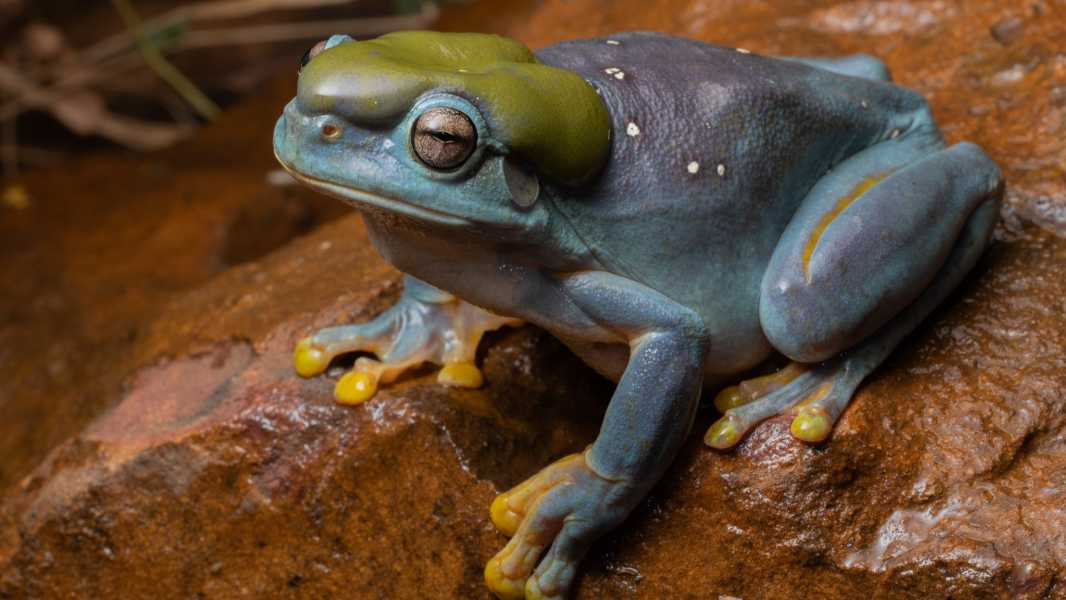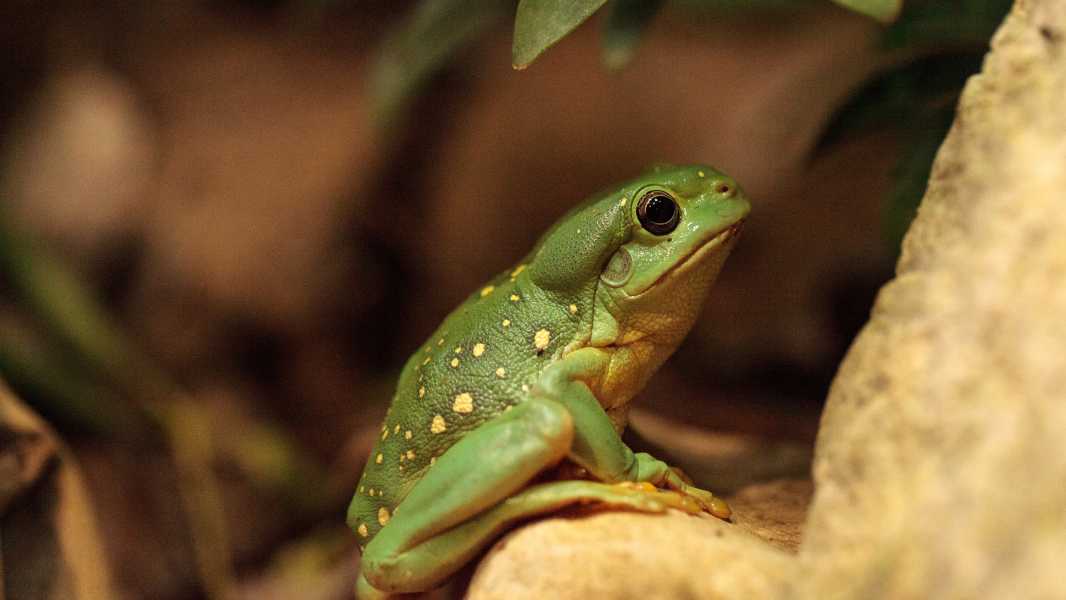
Land managers at a wildlife sanctuary in northern Australia's Kimberley region spotted a frog hopping into their workshop. (Photo credit: Jake Barker/Australian Wildlife Conservancy)
Researchers in Australia have discovered a tree frog with bright blue skin instead of its usual green, as seen in new photographs.
Experts say the blue pigmentation is the result of a rare genetic mutation.
Staff at a sanctuary in Kimberley, Western Australia, spotted the mutant amphibian when it hopped into their workshop and sat on a bench, watching them, ABC News reported on Friday (July 12). Scientists later identified the animal as a magnificent tree frog (Litoria splendida).
Land managers passed on the blue frog's photos to Jake Barker, a conservation and ecology intern at the Australian Wildlife Conservancy (AWC). “When I saw the photo of the frog, my heart definitely started racing,” Barker told ABC News. “It was amazing, it was really inspiring and special.”
Splendid tree frogs are typically green with white spots on their backs, according to the AWC. They grow to about 4 inches (10 centimeters) long and have a distinctive poison gland on the top of their heads. The poison is very bitter and serves as a defense mechanism against predators such as large amphibians, reptiles, birds, and mammals.
These frogs can live up to 20 years and are found in low rainfall regions of the northern Kimberley and the neighbouring Northern Territory.
According to the AWC, this is the first time researchers have encountered the magnificent blue-skinned tree frog. Photos show that the mutant had an olive-green venom gland on its head, several white spots on its back, and yellow pads on its feet.

Splendid tree frogs (Litoria splendida) are typically green with white and yellow spots on their backs.
Most species of frogs are green due to a combination of blue and yellow pigments in their skin, Barker told ABC News. This frog's blue coloring was caused by a rare mutation known as axanthism, which suppresses yellow pigments, he explained.
“It's just a wonderful natural phenomenon,” Jodi R told Yahoo News.
Sourse: www.livescience.com





